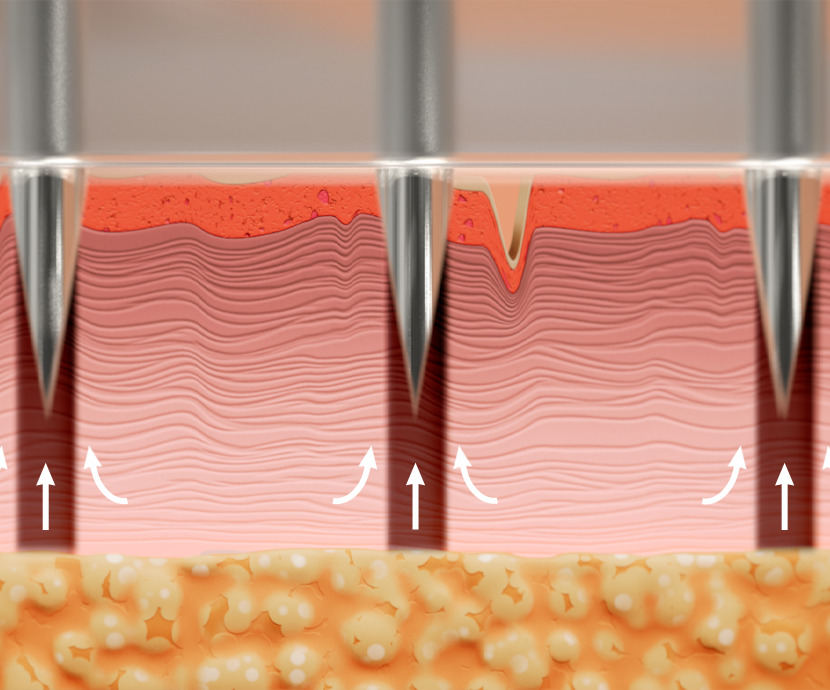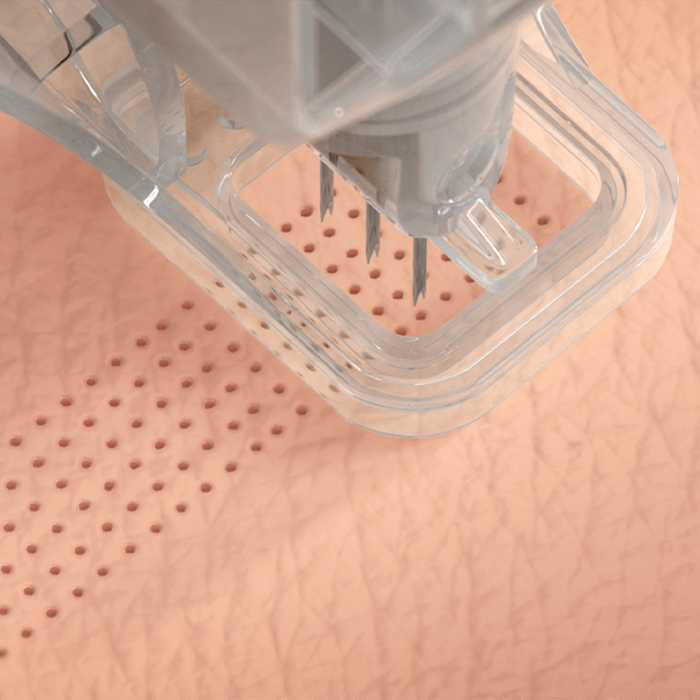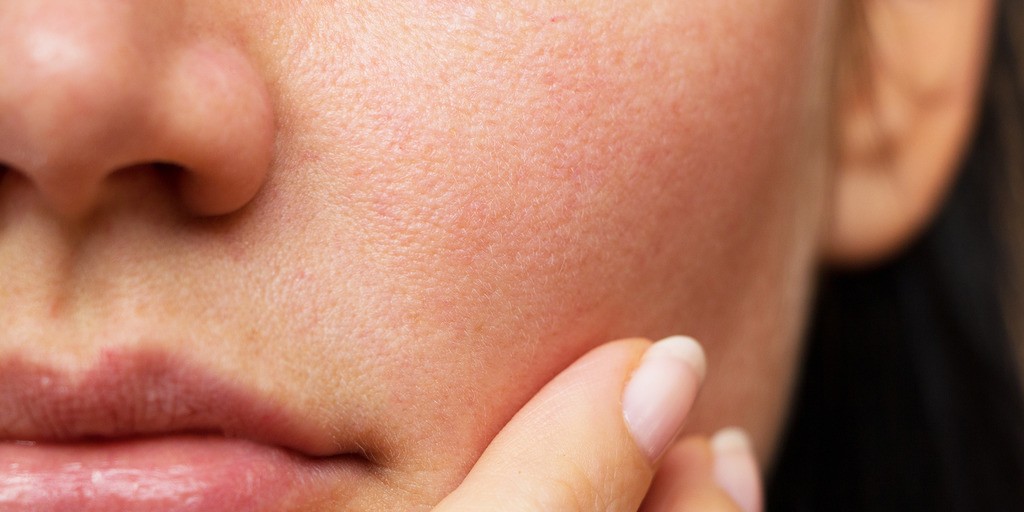In recent years, skincare and cosmetic treatments have made significant advancements, providing people with numerous options to maintain youthful-looking skin. One of these innovative treatments is micro-coring, a non-surgical procedure that has gained popularity for its ability to tighten and rejuvenate the skin in just 30 minutes. This blog post will explore the ins and outs of micro-coring, from its science to its benefits and potential risks.

What is Micro-Coring?
Micro-coring is a minimally invasive skin treatment that uses a specialized device to create tiny, precise cores or holes in the skin. The process stimulates the body’s natural healing response, encouraging the production of collagen and elastin, two proteins responsible for maintaining the skin’s elasticity and firmness.
How Does Micro-Coring Work?
Micro-coring works by using a device equipped with tiny needles that create small cores or holes in the skin’s surface. This controlled damage triggers the body’s healing response, resulting in the production of new collagen and elastin fibers. The end result is tighter, smoother, and more youthful-looking skin.
The Benefits of Micro-Coring
- Non-surgical: Micro-coring is a non-invasive, non-surgical treatment, making it an excellent alternative for those who want to avoid the risks and downtime associated with surgery.
- Quick treatment: The entire micro-coring procedure takes only 30 minutes, making it an easy addition to a busy schedule.
- Minimal downtime: Patients can typically resume their normal activities immediately after the treatment.
- Long-lasting results: With proper care, the results of micro-coring can last for several years.
- Suitable for various skin types: Micro-coring can be safely performed on most skin types and tones, making it accessible to a wide range of people.
- Customizable treatment: The depth and intensity of the micro-coring procedure can be adjusted to address specific skin concerns and goals.
The Micro-Coring Procedure

- Consultation: Before undergoing micro-coring, patients should consult with a qualified professional to determine if the treatment is appropriate for their skin concerns and goals.
- Preparing the skin: The skin is cleansed and a numbing cream is applied to ensure patient comfort during the procedure.
- Micro-coring: The micro-coring device is gently pressed against the skin, creating small cores or holes at a controlled depth.
- Post-treatment care: After the procedure, the skin may be slightly red and swollen, but these side effects typically subside within a few hours. A soothing serum or cream may be applied to help reduce inflammation and promote healing.
Micro-Coring vs. Other Skin Tightening Treatments
Micro-coring is just one of the many skin tightening treatments available today. To help you decide if it’s the right option for you, let’s compare it to other popular treatments:
- Microneedling: Like micro-coring, microneedling uses tiny needles to create small punctures in the skin, stimulating collagen and elastin production. However, microneedling does not remove any skin tissue, making it less effective for addressing more severe skin laxity.
- Radiofrequency (RF) treatments: RF treatments use heat energy to stimulate collagen production and tighten the skin. While these treatments can be effective for mild to moderate skin laxity, they may not provide the same level of tightening as micro-coring.
- Ultrasound therapy: Ultrasound therapy, such as Ultherapy, uses focused ultrasound waves to heat the deep layers of the skin and promote
collagen production. This non-invasive treatment can provide noticeable skin tightening results but may require multiple sessions to achieve optimal outcomes. Micro-coring, on the other hand, typically offers more immediate results with just one treatment.
- Laser skin resurfacing: Laser treatments, such as fractional CO2 laser resurfacing, use light energy to remove the outer layers of skin and stimulate collagen production. Although laser treatments can provide significant skin tightening, they often require more downtime and carry a higher risk of side effects compared to micro-coring.
Potential Risks and Side Effects of Micro-Coring
As with any cosmetic treatment, micro-coring comes with its own set of potential risks and side effects. Some of the most common include:
- Redness and swelling: Immediately after the treatment, patients may experience mild redness and swelling, which should subside within a few hours to a couple of days.
- Infection: Although rare, there is a risk of infection if the micro-coring device is not properly sterilized or if post-treatment care instructions are not followed.
- Scarring: In some cases, micro-coring can result in scarring, particularly if the treatment is performed too aggressively or if the patient is prone to keloid formation.
- Hyperpigmentation: Patients with darker skin tones may be at a higher risk of experiencing post-inflammatory hyperpigmentation following micro-coring. Discussing this risk with a qualified professional before undergoing the treatment is crucial.
Tips for Post-Treatment Care

To maximize the benefits of micro-coring and minimize the risk of complications, it’s essential to follow proper post-treatment care. Here are some tips to keep in mind:
- Keep the skin clean: Gently cleanse the treated area with a mild, non-abrasive cleanser to help prevent infection.
- Apply soothing products: Use a soothing serum or cream containing ingredients like hyaluronic acid, aloe vera, or chamomile to help reduce inflammation and promote healing.
- Avoid direct sun exposure: The treated skin will be more sensitive to the sun, so it’s crucial to avoid direct sun exposure for at least one week after the treatment. Apply a broad-spectrum sunscreen with an SPF of 30 or higher when spending time outdoors.
- Stay hydrated: Drinking plenty of water can help support the skin’s healing process and promote overall skin health.
- Be gentle: Avoid rubbing, scratching, or picking at the treated area, as this can cause irritation and increase the risk of scarring.
How to Choose the Right Micro-Coring Provider
Selecting a qualified professional to perform your micro-coring treatment is crucial for ensuring a safe and effective procedure. Consider the following factors when choosing a provider:
- Credentials: Look for a provider who is board-certified in dermatology or plastic surgery and has experience with micro-coring treatments.
- Reviews and testimonials: Read online reviews and ask for testimonials from previous clients to get a sense of the provider’s expertise and patient satisfaction.
- Consultation: Schedule a consultation to discuss your skin concerns, goals, and expectations with the provider. A qualified professional should be able to answer all your questions and provide personalized recommendations based on your unique needs.
- Facility: Choose a provider who operates out of a clean, well-maintained, and reputable facility. This can help ensure that the treatment is performed in a safe and hygienic environment.
Micro-coring is a promising skin tightening treatment that offers an array of benefits, including minimal downtime, quick treatment times, and long-lasting results. When performed by a qualified professional, micro-coring can help individuals achieve a more youthful and rejuvenated appearance without the need for surgery. However, it’s essential to be aware of the potential risks and side effects associated with the procedure, and to follow proper post-treatment care to maximize its benefits.
By understanding the micro-coring process, comparing it to other skin tightening treatments, and choosing a reputable provider, you can make an informed decision about whether this innovative treatment is right for you. With proper care and maintenance, micro-coring can provide a noticeable improvement in skin elasticity and firmness, helping you maintain a youthful and radiant appearance for years to come.
